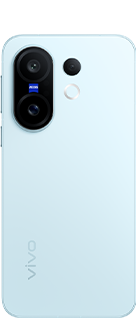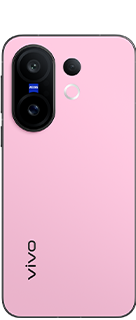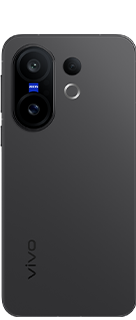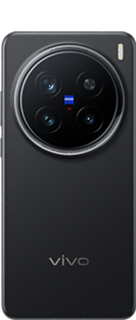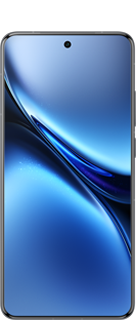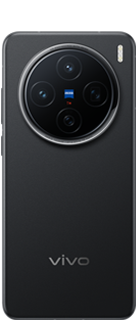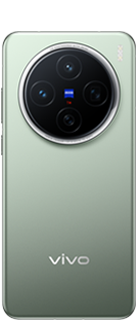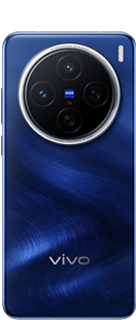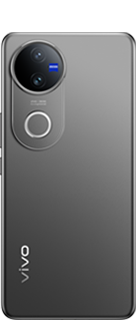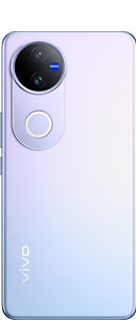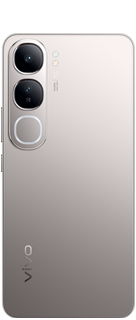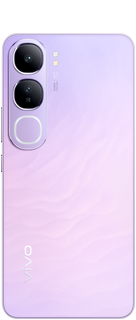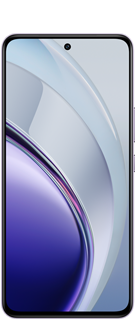A Romantic Idea
vivo understands that most consumers want a product with beautiful aesthetics as well as excellent functional capabilities. But the company wants to go one step further and give users the freedom to express their personalities and style through our unique Color Material Finish (CMF) designs. Our latest color-changing smartphone concept was inspired by the cycle of night and day, as well as the fascinating shifting colors of chameleons blending into their environment. Featured on a diverse range of models with unique designs,our dual-color technology enables users to convey their emotions and personal style, enriching the user experience.

Our pursuit of excellence in innovation has resulted in the discovery of a material with color-changing properties when exposed to UV light. We adapted and applied the material to our products, giving them an exterior that reacts to the environment by changing its color without requiring additional energy. This original CMF design builds on vivo’s recognizable design language, retaining the smartphone’s slim and sleek form factor and excellent reception capabilities.
The photochromic Color Changing Glass technology is a state-of-the-art design that allows the exterior of the device to display two completely different colors depending on the light conditions. The photochromic Color Changing Glass technology displays more vibrant, exciting colors compared with other color-changing technologies, such as those enabled by electrochromism, allowing our designers to go beyond previous limitations and push the boundaries of CMF design.
A Challenging Process
With this romantic, though ambitious, dream, vivo began the search for materials that could display the most reliably exciting color change. At that time, the technology was nowhere in sight. Starting in 2018, our project team experimented with countless different materials, including the photochromic materials. However, the photochromic materials we used at the initial stage were not durable as it may cause our CMF design to be compromised. We had to give them up.
Though the project team was not discouraged and started to look for better alternatives by studying academic papers, attending industry fairs, and exploiting our supply chain resources. After testing six materials supplied by manufacturers in Germany and Japan,they finally settled on a material that performed well enough to be used in smartphones.By then, it was already 2020.

The Tested Materials
Following the discovery of such incredible material, another challenge arose – how to apply the photochromic material without affecting the smartphone’s functions.The photochromic molecules are a class of molecules that change color when stimulated by a light source, and the color effects depend on the internal molecular structure of the material. To create a color changing surface, we needed innovative ways to process the bottom layer of the explosion-proof film which was attached to the rear glass panel.To be specific, we needed to ensure the even blending of the bottom material and the color-changing material.
After discussions by vivo’s experts, seven proposals for the material combo were then put forward through expert discussions, and the optimal application was selected based on color rendering, cost, durability, ease of use and other aspects.
Meanwhile, the project team significantly raised the original testing standards, and only settled on the final solution when it was certain that the outcome was satisfying.

The Light Experiments
During the process, testing the color effects under different light conditions was a major step. By doing so, the applied materials were exposed in the natural sunlight under variable quantity of time and temperature. Interestingly, UV nail lamps later became one of the choices to stimulate UV lights in addition to laboratory UV lamps because of their flexibility. That way, the team was able to quickly see the color-changing effects, and patterns created by covering specific objects on the materials. Through telling how good the color-changing effects and the patterns performed, as well as their time of existence, the team was allowed to accordingly adjust the proportion of materials and waiting for the ideal. More than 15 different colors were studied, and only a few of the color-changing effects passed the rigorous screening that allowed them to be later brought to consumers.
Eventually, the process came to the final sprint – completing the mass production testing to ensure the application of photochromic materials meets the product launch standard. It was the first time that photochromic materials had been used on a large scale, which meant that testing with new inspection standards was needed, as well to establish an entirely new supply chain.

One of the most important criteria is to show resistances to weather and aging. To test how our prototypes perform, the prototypes went under rigorous experiments in vivo’s lab. The first was a UV aging test, where prototypes were irradiated for 96 hours using QUV Accelerated Weathering Tester. One cycle of testing consisted of 4 hours of UV exposure and 4 hours of humidity condensation, and the entire process took up 12 cycles in total. The second experiment concerned solar radiation. Placed in a box under a hernia lamp, the prototypes were irradiated for 20 hours and stayed in darkness for 4 hours.*
This counted as one cycle and the solar radiation process consisted of 3 cycles overall.
Besides being able to resist to weather and aging, showing resistances to many other real-life scenarios were also necessary. Thus, the prototypes had also undergone a series of tests including heat&cold stress, salt spray and roller drop test, to prove its abilities of resisting to hand sweat, cosmetics, the random drop, etc. Finally, the prototypes survived with outstanding performances of meeting the needs of users’ daily life scenarios, and we knew that it was time.
A Tried-and-True Success
In July 2021, the photochromic Color Changing Glass technology was successfully launched as scheduled. Since its release, it has received widespread praise from consumers. Many vivo users express their love of the technology, with one user saying, "I can play with this phone all day." The team was delighted to hear such positive feedback on all their hard work. “This is a great achievement for our whole team,” one of the vivo design team members said. “The fact that we were able to innovatively apply the technology on a mass-produced smartphone is a milestone for us."
At vivo, innovation is not just a slogan but a practical way to explore what users want most and create outstanding new product experiences to meet those needs. Innovation is never an easy process. From the discovery of photochromic materials to the final design and application, the three-year process was not without its challenges, but the project team stayed focused on the final goal. This is because delivering extraordinary experiences to users is vivo’s passion and promise.
*All data is based on our technical design parameters, laboratory test results and supplier test data. Actual performance may vary depending on software version, specific test environment and phone model.

In its pursuit of excellence when it comes to satisfying consumer needs, the vivo X series has pushed the boundaries of mobile imaging time and time again. The vivo X50 Pro set out to redefine mobile photography worldwide. Equipped with the world’s first smartphone camera with an integrated gimbal stabilization feature, the acclaimed X50 Pro marked a new era of mobile imaging. The gimbal camera system improved with each new generation and even expanded to the portrait camera with the latest X80 Series.
Bold Innovation Begins
at the Drawing Board
The revolution in smartphone camera technology has unquestionably changed how people capture their life and experiences. We are more spontaneous in the way we take pictures and certainly, we do it more often. Smartphones have democratized photography, which is no longer solely the preserve of professionals. vivo wanted to further close the gap in image quality between cameras and smartphones by bringing professional photography features to smartphone users, making quality photography truly accessible to everyone.
Smartphone cameras have become more capable. Yet, taking clear hand-held photos and videos without the need for additional equipment remains a pain point for smartphone imaging. In 2020, vivo introduced the world’s first Gimbal Camera System with its flagship X50 Pro smartphone. Modeled after a full-size professional gimbal, X50 Pro’s built-in gimbal module moves in the opposite direction of shaking motions, providing increased stability for the main camera. It uses a double ball structure to achieve triple-axis rotation, ensuring three-dimensional stabilization.

Electromagnetic induction

"Double Ball Cross" Structure

Biaxial rotation
A Revolutionary Feature
Delivered in a Familiar Package
vivo devices boast a clean and contemporary aesthetic, characterized by a distinctive light and slim design. Maintaining vivo’s signature thinness while incorporating a gimbal structure represented an arduous task. vivo’s micro gimbal camera consists of several components, namely a limiting mechanism, double ball suspension, lens, voice coil motor, double S-type FPC cable, T-FPC, magnetic power frame, module carrier, and protective cove, which ultimately take up space in a device. In fact, the overall board area of a small gimbal solution is about five times that of an ordinary main camera. vivo tested hundreds of layout combinations and stacking schemes to develop an innovative solution that would save 40% of the phone’s board area and reduce its thinness by 1mm.*
The final design masterfully balances the exterior appearance and interior layout, while still ensuring satisfactory functioning.
The gimbal camera combines hardware and elegant software solutions to enable a smooth user experience. The Big-eye rear main camera rotates to bring the whole world into view, while the Gimbal Radar, an on-screen animated ball that reflects the gimbal’s movement, lets users know when the frame is stable. vivo’s motion-deblur algorithm, customized sensors, and continuous focus tracking further enhance the image and video clarity.
Redefining Smartphone
Imaging for Generations
Following the successful launch of the X50 Pro in 2020, the gimbal camera system improved with each new generation. In the following series, gimbal stabilization was upgraded with the addition of Pixel Shift Ultra HD Imaging which allows the X60 Pro and X60 Pro+ to deliver superior photography experiences with clearer images and more accurate colors to users. The X60 Pro also features an f/1.48 larger aperture which takes 16% more light than in previous models. Meanwhile, the AI noise reduction algorithm enhances brightness and reduces noise to present brighter, cleaner images. vivo’s independently developed night algorithm in the X60 series was extended to the wide-angle camera, improving its night capture effects.
In the X70 series, trough a multitude of height reduction techniques and design R&D, vivo has managed to miniaturize the Ultra-Sensing Gimbal Camera and apply it to the main cameras on the X70 and X70 Pro.
The main dual-camera setup of the X70 Pro+ includes a 48MP Ultra-Wide Gimbal Camera which offers wide-angle capture with no correction needed, as well as ultra-HD and ultra-wide night capture.
With the X80 Series, launched this year, the Gimbal Camera system was moved to the portrait camera to support a broader range of shooting scenarios. X80 Pro is equipped with a 50mm Gimbal Portrait Camera that brings the Camera Panning feature. It can shoot images with a clear subject and linear motion blur in the background by combining portrait motion tracking technology, human-background segmentation technology, and intelligent background bokeh technology, thus creating outstanding and dynamic portraits in any scenario.
*All data is based on our technical design parameters, laboratory test results and supplier test data. Actual performance may vary depending on software version, specific test environment and phone model.

It is often argued that achieving convenience in the digital era comes at a cost - lower security. At vivo, we refuse to make this trade-off. Combining innovative fingerprint scanning technology and clever, elegant design, in 2021 vivo launched its first smartphone with 3D Ultrasonic Large Fingerprint Sensor technology, bringing advanced security, convenience, and new levels of personalization to users.
This feature builds on years of pioneering innovation. vivo developed the first mass-produced in-display fingerprint recognition technology in 2018, breaking away from the conventional fingerprint scanners at the time, which featured sensors on the side or the back of the device. This clever design worked with the growing trend of larger and larger screens, without disrupting the experience. Today, vivo continues the user-centred approach to introducing new features, including the launch of the world’s first foldable phone with 3D Ultrasonic Dual-Screen Fingerprint Sensors, the X Fold, which has fingerprint sensors on the inner and outer screens for easy access.
Elegantly Designed for Convenience
The average smartphone user unlocks their phone quite frequently throughout the day, so vivo leverages clever design inside and out to make the experience convenient, simple, and tailored to the preferences of each user. Following our design principle of elegance, each touch point, both in terms of hardware and software, has been carefully crafted to allow for intuitive interaction and opportunities for users to express their individuality through enhanced personalization.
vivo’s 3D Ultrasonic Large Fingerprint Sensor has a notably larger scanning surface area, allowing for a flexible unlocking experience. The set-up process is immediate as the large reading area can almost instantly collect the required amount of biometric information for the fingerprint unlocking process. Users can set up fingerprint unlocking by simply pressing the display once, saving them minutes of waiting and tapping onto the sensor.
Once the fingerprint is set up, the sensor will deliver one of the fastest unlocking experiences in the mobile industry, at just 0.2 seconds*. The sensor also offers high-performance, even in extreme conditions, such as bright sunny outdoors or late evenings with low light exposure. Moreover, whether you have wet hands, oily or dusty fingers, vivo’s 3D Ultrasonic Large Fingerprint Sensor technology will continue to have a high success rate of unlocking.
The fingerprint scanning area situated under the display has been moved upward to achieve a more ergonomic design. In addition, the large area can now be split into three. Each of the two additional area unlocks the smartphone in a different mode based on the user’s choice. The user can choose two applications to appear directly on the lock screen and is also able to choose the layout in which they appear. Finally, the chosen applications can be launched directly from the lock screen, for the user’s ultimate convenience.


Advanced Security in One Touch
The fingerprint scanning authentication method has significant advantages over other security systems, but most importantly, it does not require users to memorize different passwords or login information. This also means that the fingerprint recognition technology used must be very reliable and accurate.
The vivo ultrasonic sensor meets high security standards, rejecting imposter photos and fingerprint molds.
It uses technological advances and ultrasonic waves to scan 3D features, capturing your finger’s ridges, valleys, and pores to generate a deeply accurate 3D image.
The feature is designed to allow for multiple levels of security. Users can set up a two-fingerprint authentication process, ensuring safe access to chosen apps such as payment apps, social media, or their personal media gallery, a solution that’s been carefully crafted with the user needs in mind.
*All data is based on our technical design parameters, laboratory test results and supplier test data. Actual performance may vary depending on software version, specific test environment and phone model.
